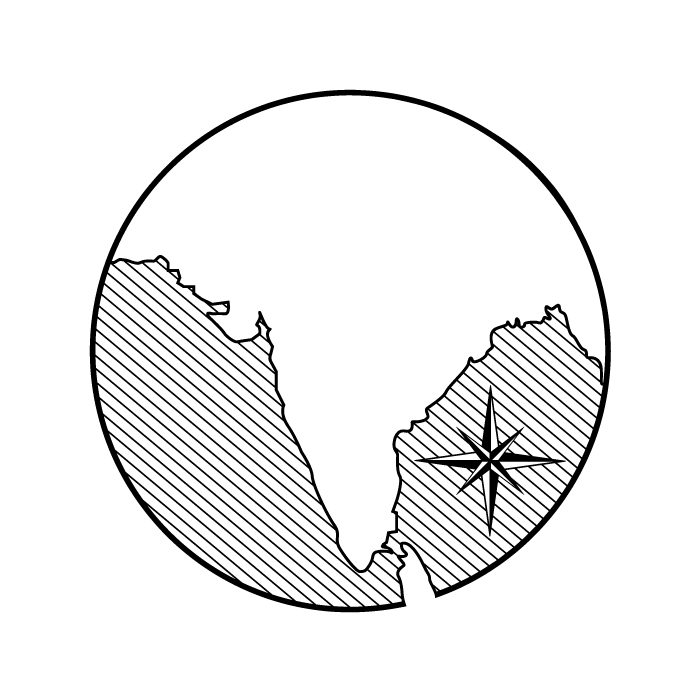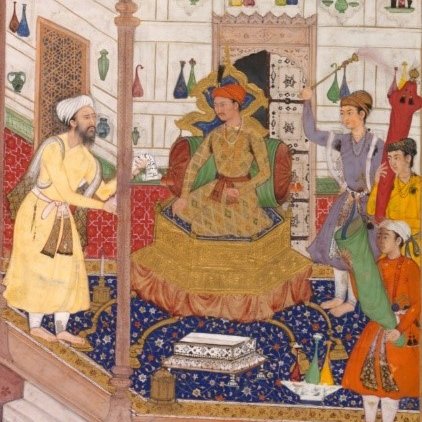 Migration of Images, Texts, Ideas and Objects from Timurid Central Asia to Mughal India, 16th–18th Centuries
Migration of Images, Texts, Ideas and Objects from Timurid Central Asia to Mughal India, 16th–18th Centuries
Dipanwita Donde
donde@bilderfahrzeuge.orgIn the 16th century, a dense traffic of images migrated from central Asia to the Indian subcontinent. Some of this movement was physical, through the vehicle of travelling objects and artists, and some was virtual, with imaginative artists of Hindustan trying to create a vision of the Timurid/central Asian heritage. My research focuses on this dynamic moment, when Mughal artists attempted to depict the imagined glory of the Timurid Empire in illustrated manuscripts. To record and display the greatness and grandeur of their empire, several Timurid princes initiated prestigious illustrated manuscript projects showcasing the artistic brilliance of calligraphers, artists, colourists, and album makers employed at the imperial courts. Illustrated manuscripts were easily transportable and travelled from Herat (in present day Afghanistan) to India, particularly after the decline of the Timurids in early 16th century. These illustrated manuscripts, containing images and texts that described the history and culture of the Timurids, served as models for Mughal artists as they narrated and illustrated the Mughal reign in India.
I ask the following key questions: how can the historical, political, social and cultural memory of the Mughals be traced in illustrated manuscripts? What particular events, episodes, and genres expressing a shared cultural heritage with Timurid ancestry were favoured by the Mughals for shaping their dynastic identity? How significant was classical Persian literature for translating meanings, intentions, and ideas into conversations between text and image in illustrated folios? Were Mughal artists successful in rendering the gestures, postures, and emotions contained in Persian literary works in order to express moods and feelings in portraits of chief protagonists, including emperors, in historical and classical manuscripts? Did the encounter with Western art brought by Jesuits to the Mughal courts in the 16th century transform the work of Mughal artists? Did Mughals artist merely ‘mimic’ the artistic vocabulary derived from European art in order to achieve realism in documenting historical events and details from life? Or, did ‘borrowings’ from European art particularly benefit Mughal artists as they developed a signature pictorial language for expressing emotions, feelings, and dramatization?
My study takes issue with the accepted view of the dominant impact of Western art on Mughal art; instead, it sees a strong influence in the central Asian roots of Mughal art. At the same time, these original images were customized by Mughal artists as they migrated from central Asia to Hindustan. The study, analysis, and interpretation of images and inscribed texts that often accompanied pictorial compositions will provide insight into the intellectual matrix of the Mughal elite and help identify the impact of Persian Sufism on image-making practices in Mughal art. Further, the poetics between text and image will provide a methodology for examining Mughal paintings within the context of its own cultural practices, such as in classical Persian poetry, literature, and philosophy.
BMBF-funded third-party project: Bilderfahrzeuge – Aby Warburg’s Legacy and the Future of Iconology
Related publications
‘Synthesis between Text and Image: Sarnath Bannerjee’s Graphic Fiction’, Bilderfahzeuge Blog, 2020 [https://bilderfahrzeuge.hypotheses.org/4650]
Review of: Kavita Singh, Real Birds in Imagined Gardens: Mughal Painting between Persia and Europe (Los Angeles, 2017), Bilderfahzeuge Blog, 2019 [https://bilderfahrzeuge.hypotheses.org/3950]
‘The Mughal Sikander: Influence of the Romance of Alexander on Mughal Manuscript Painting’, in Anil Kumar Singh (ed.), Dialogue of Civilizations: India and Greece (New Delhi, 2019), 201–17
‘A Mole on Akbar’s Nose: Subjectivity in Mughal Portraiture in Response to Persian Sufism’, in India and Central Asia (manuscript in preparation)
Related Events and Presentations
‘Diffusion and Assimilation of Images and Ideas between Central Asia and Mughal India: A Study of Birth Images of Shah Timur and his ancestor, Ghazan Khan’, paper given at the conference ‘Indo-Persian Manuscripts: Issues and Challenges in the Modern Time’, The English and Foreign Languages University, Hyderabad, 6–8 Mar. 2020
P‘Birth of Timur’ paper given at the workshop of the International Research Group, ‘Bilderfahrzeuge’ at the Warburg Institute, London, 17–18 June 2019
‘Rustam and Akbar: Poetics between Text and Image in Mughal Manuscript Painting’, presentation at the Warburg Institute, London, 14 Mar. 2019
